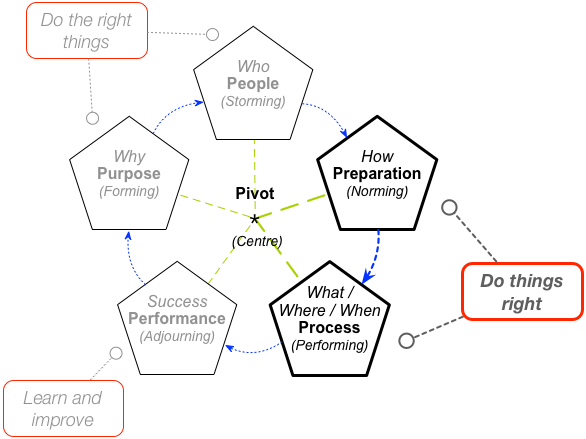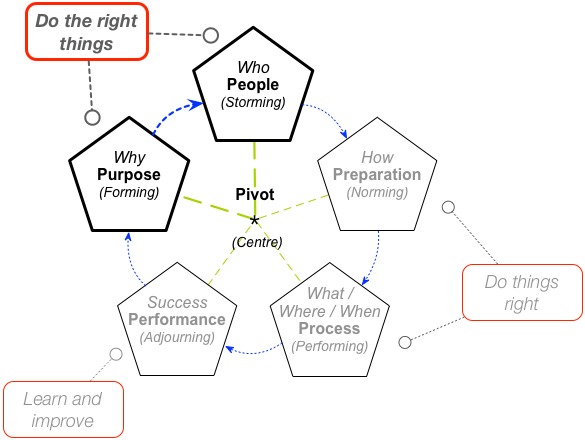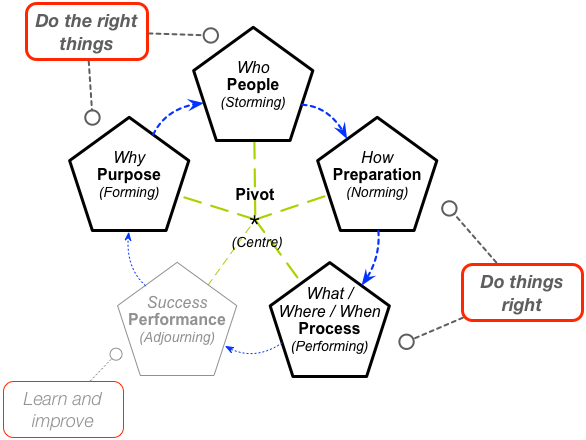Building effectiveness in a small business
One of the great things about doing my ‘Tetradian on Architectures‘ mini-video series is that I get to tackle real-world questions about everyday enterprise-architecture, sent in by people all around the world.
In this case, for the current episode in the series, ‘Enterprise-architecture in a small-business‘, the question came from one of our Patreon supporters in South Africa, Daniel Faucitt:
For a small-business with no budget for an enterprise-architecture consultant, what core-principles of EA can I use to get started?
In the video, I summarised four architecture-related actions that even the smallest business would probably find useful:
— Action A: Identify the shared-enterprise you’re in – the broader big-picture context. This provides the basis for a business-architecture that can understand ‘outside-in’, that can support ‘pull-marketing’ and the like, and that really does know what business it’s in. For more on that, perhaps see the slidedeck ‘The enterprise is the story‘.
— Action B: Identify the vision and values of that shared-enterprise – what drives the shared-enterprise, what it values, what it rejects. This helps to clarify opportunities, risks, decision-criteria, success-criteria, internal and external expectations, and possible hidden-challenges from anticlients and the like. For a step-by-step on how to do this, see slides 73-77 of ‘The enterprise is the story’, plus the slidedeck ‘Vision, role, mission, goal‘ on the crucial distinctions between each of those terms.
— Action C: “Things work better, together, on-purpose” – build awareness of interdependencies, of how things connect together and support each other (or not) across the whole. Perhaps the core value-proposition for enterprise-architecture is that it helps this to happen – that it helps to bring better enterprise-effectiveness.
— Action D: Build the maturity – use a maturity-model to guide what to do next, and where to focus any spare attention for improvement. For more on this, see the slidedeck ‘Stepping-stones of enterprise-architecture: Process and practice in the real enterprise‘ and my book ‘Doing Enterprise-Architecture‘.
Extending outward from those actions, I’d add one more theme, in three parts:
- Do the right things
- Do things right
- Learn and improve from every action
The crucial point here is that these are another set of ‘things’ that must “work better, together, on-purpose”. In a viable enterprise, each of these supports the others; each is supported by the others; each is needed to support the others; the whole works well only as a whole.
And – in the longer-term, especially – the enterprise is viable only to the extent that they are all present, and do work together, consistently, on-purpose.
To explain this, I’ll use the Five Elements frame to illustrate what happens when they are not all included in the story.
First, the one that usually seems the most obvious to most people: do things right. For example, classic ‘scientific management‘ or Taylorism, at its best, is about doing things right – or at least, doing the predictable things right. It focusses on efficiency, on reliability, on productivity and other value-concerns of that ilk.
There are two key parts to this – preparation and planning; and process, the actual work of production. In classic Taylorism, these are the distinct roles of ‘the management’ and ‘the workers’; in classic military, there’s a similar split between officers and ‘other ranks’. Either way, it seems both parts are needed if we’re to do things right – and they do need to be distinct:
But if we over-focus on ‘doing things right’, there’s a high risk of wastefulness and worse – often even a full crash-and-burn – because of what gets glossed-over in that picture above.
To resolve that, we need to ensure that we also do the right things. This invokes an emphasis on appropriateness, and on what we might call elegance, an awareness of and orientation towards people rather than machines.
Again, there two distinct parts to this: on the one side, about strategy, identity and purpose; and on the other, about people and their roles within the overall enterprise:
But if we over-focus on ‘doing the right things’, there’s again a risk of wastefulness and worse – or, more likely, a risk that nothing gets done at all – because of what’s glossed-over in that picture above.
To resolve those two points above, we’ll often hear the phrase ‘doing the right things right‘. For example, it’s often associated (if somewhat incorrectly) with the work of key people such as W. Edwards Deming. That phrase gives us a picture that looks like this:
Yet what that phrase tends to miss (and which Deming didn’t miss, though others still do) is the need for continual learning and improvement – an assessment of benefits-realised and lessons-learned from the work just done, and then used as feedback to guide purposeful change, often across the enterprise as a whole.
Do the right things. Do things right. Learn and improve. Each element leads to the next, and supports the next, in a continuous, self-adapting cycle of deliberate, purposive action:
Remember that we need all of the elements of this cycle to be in place and in active use: if we don’t do that, we risk losing out on the benefits. For example, the reason why Agile-type development methods so often fail is that whilst they do focus on ‘doing things right’, and do include a sizeable element of ‘learn and improve’, the rejection of almost any architectural focus – dismissed and derided as irrelevant ‘big design up-front’ – means that they risk missing out on the big-picture, on ‘doing the right things’.
Do the right things. Do things right. Learn and improve. Onward and onward, as a continual cycle.
The great thing about that cycle is that it always works the same way, everywhere, every level, every type of context, every type of content. In that sense, it’s ‘fractal‘. And it’s one piece of architecture-as-method that I’d recommend that everyone learn how to use – in business and elsewhere.
So yes, there’s quite a lot of enterprise-architecture principles that are of direct, immediate, practical value to every business, however small that business might be – and they cost nothing at all to get started and to learn how to use.




0 Comments on “Building effectiveness in a small business”